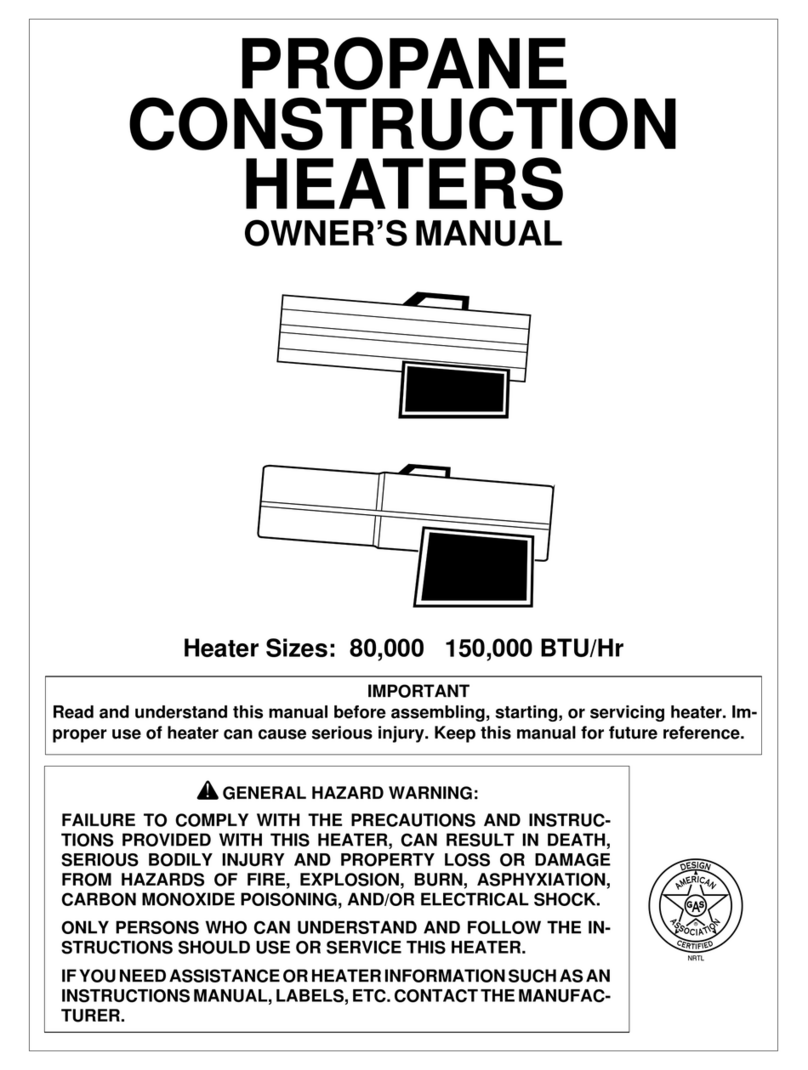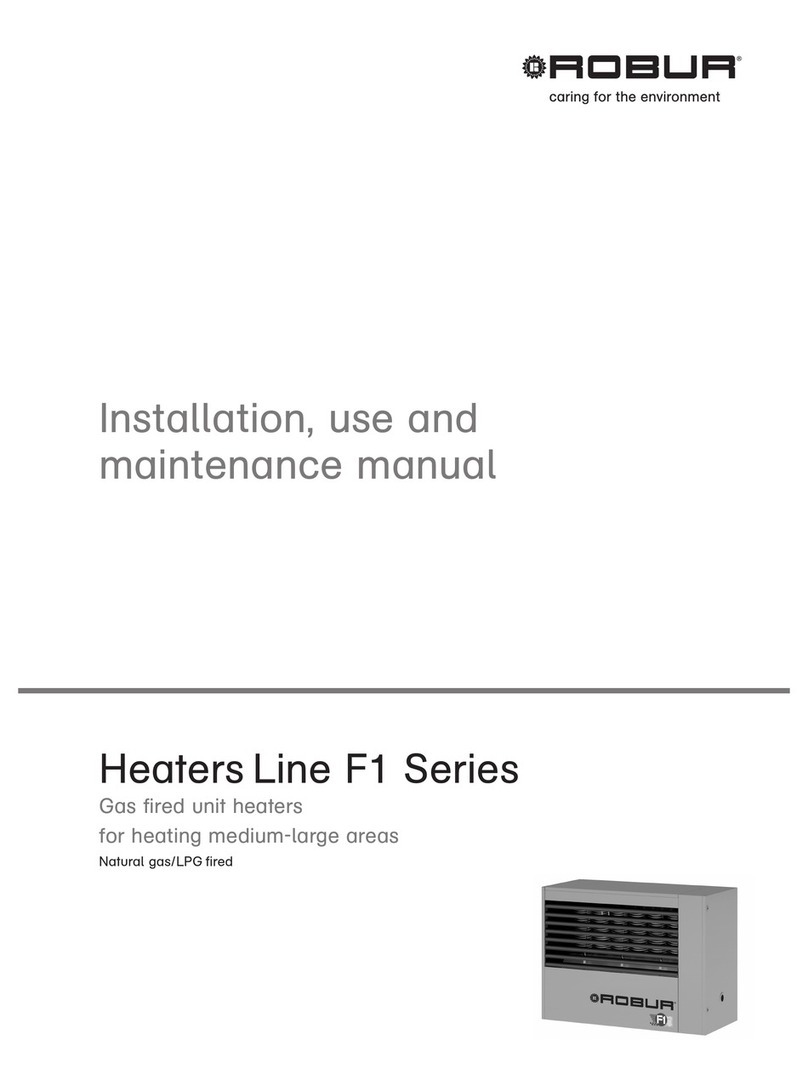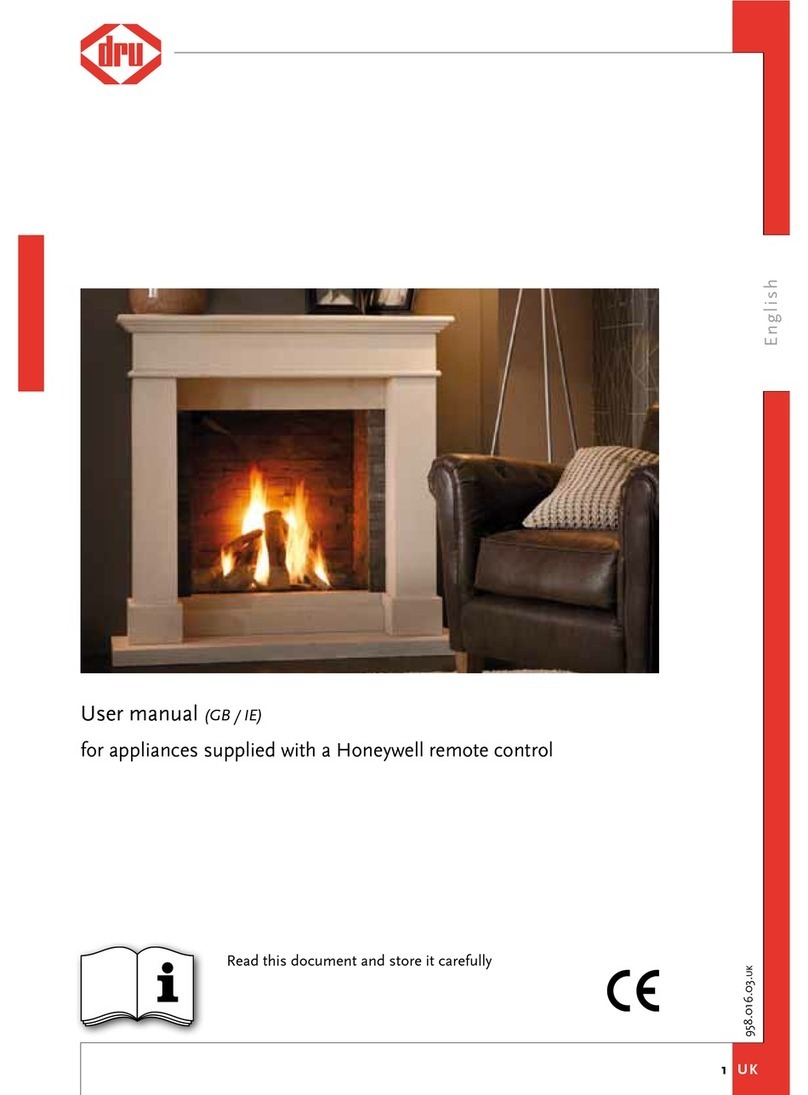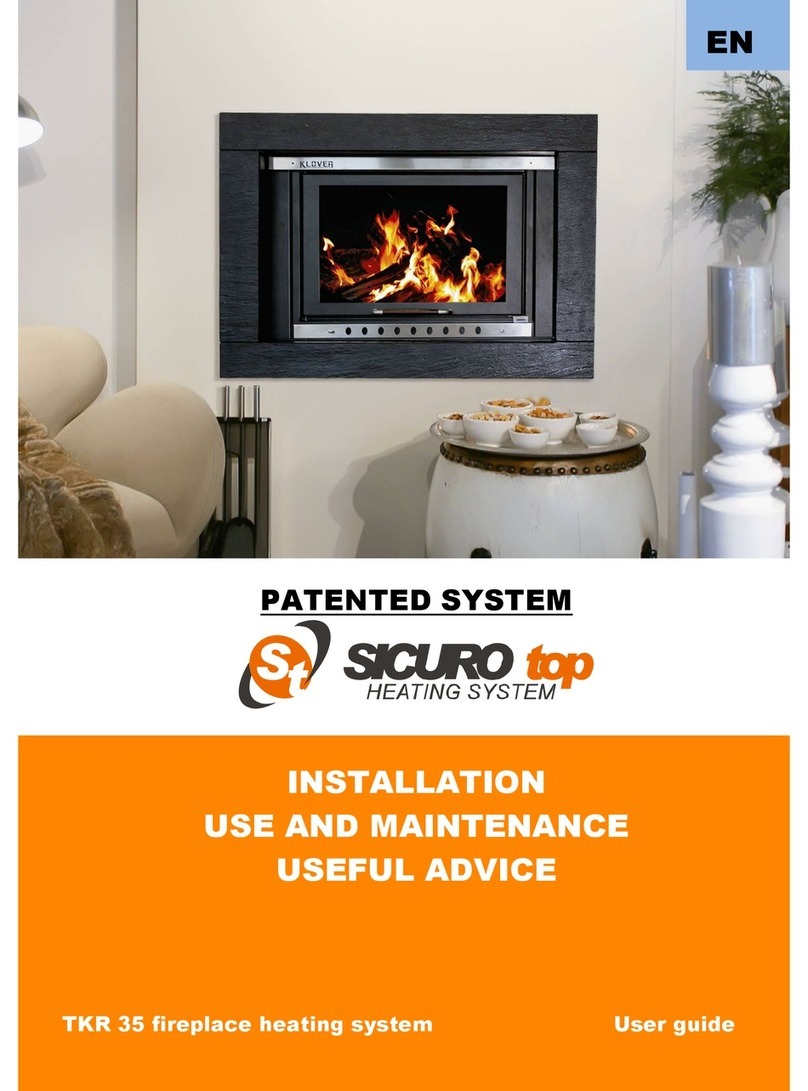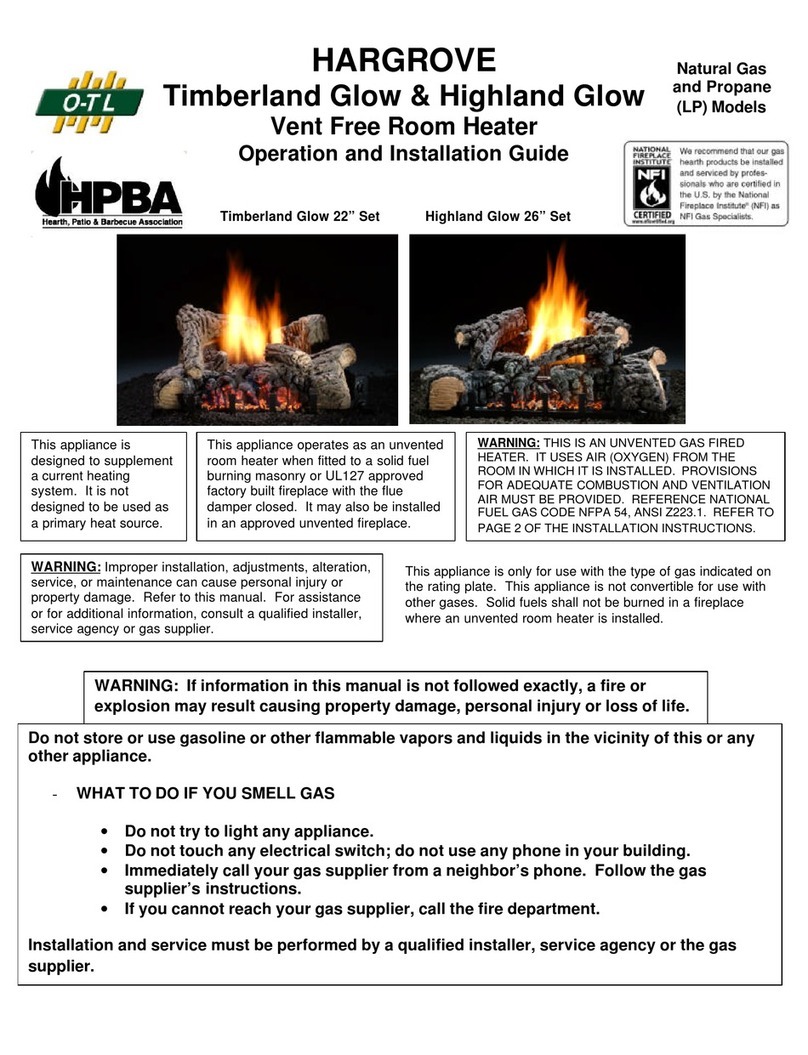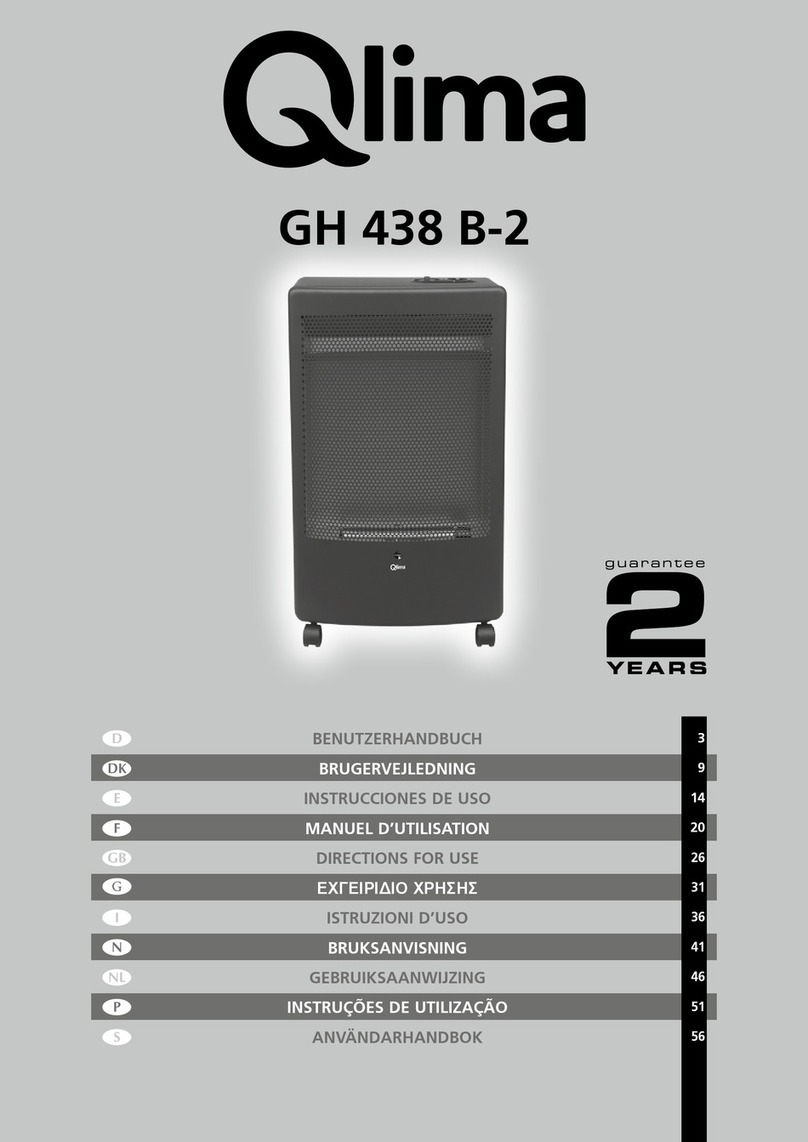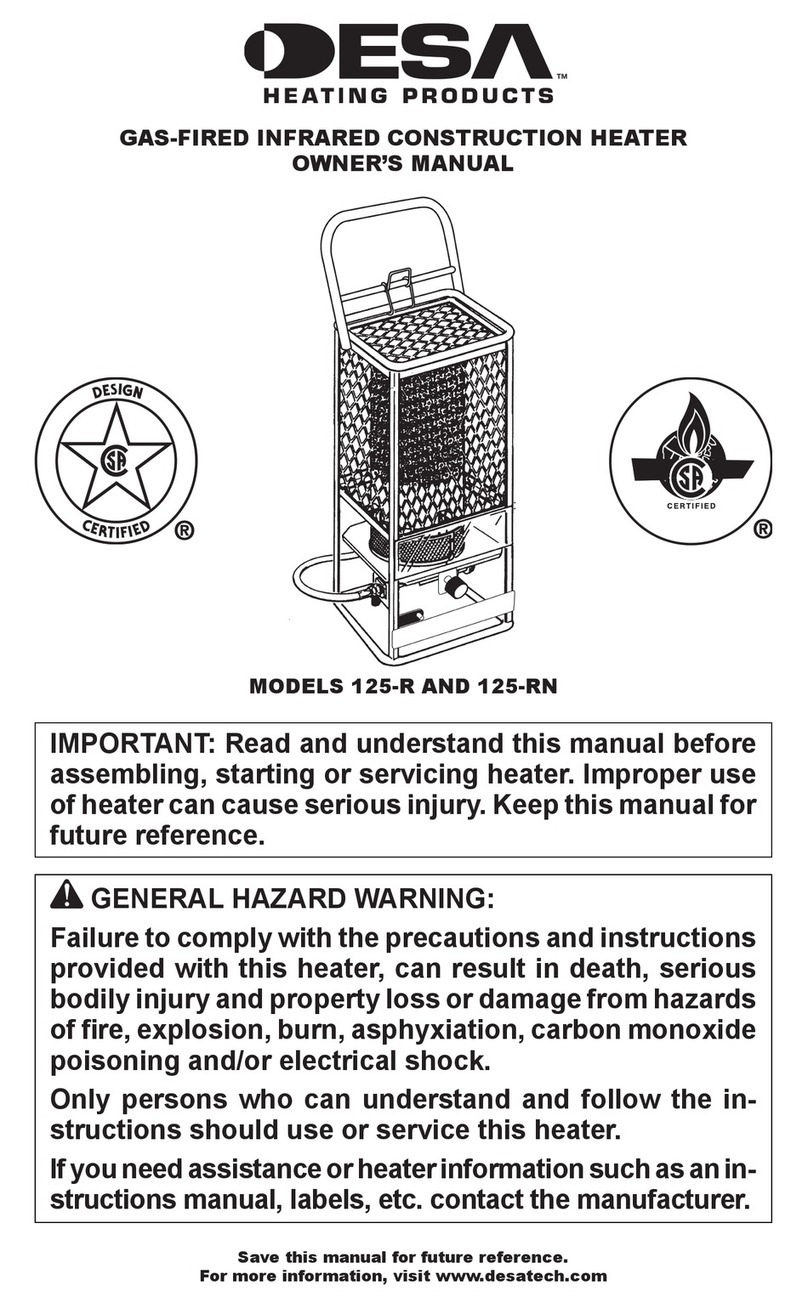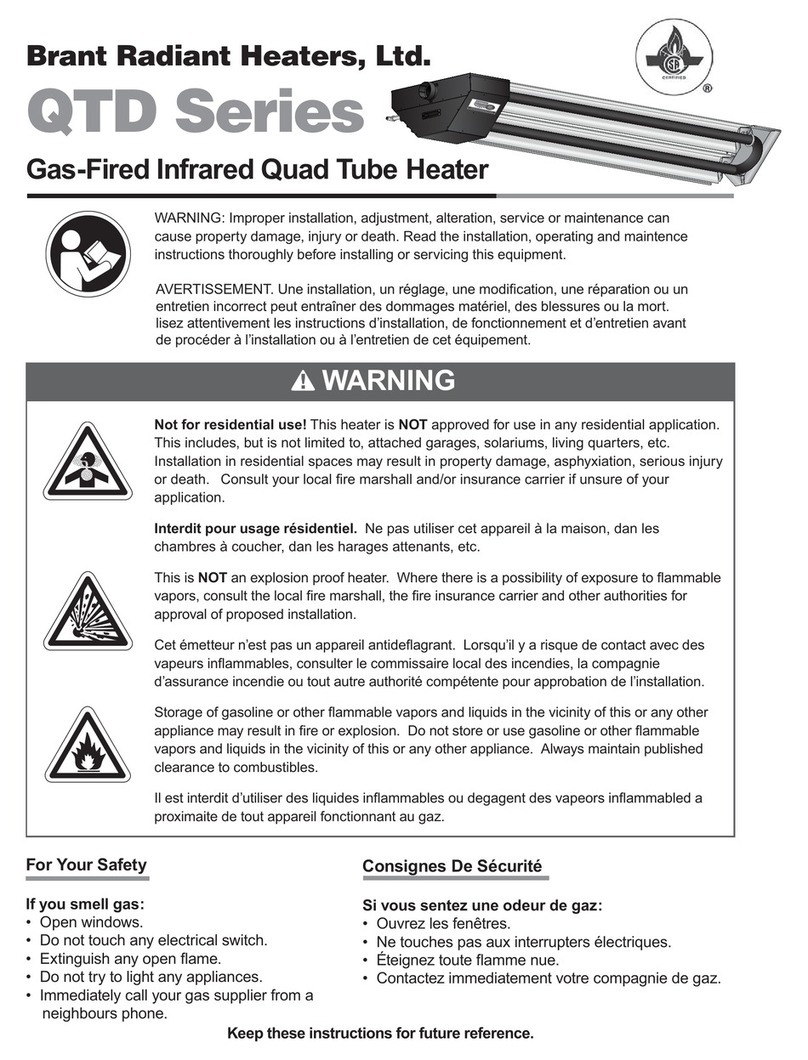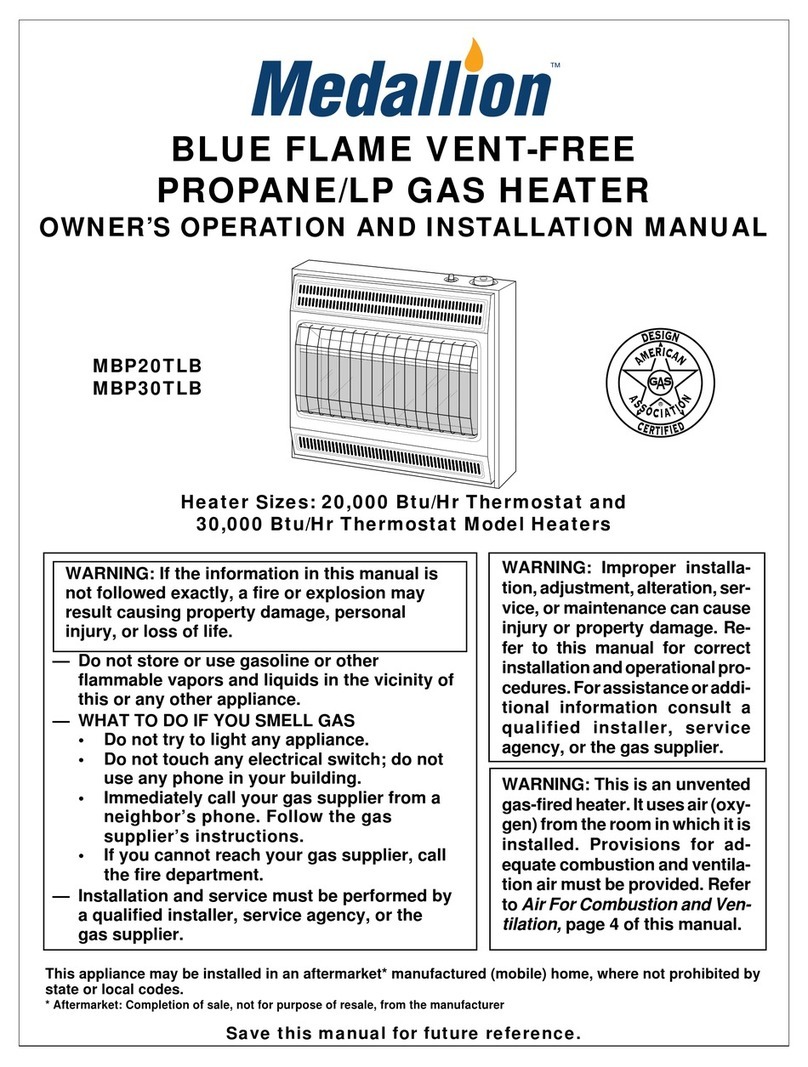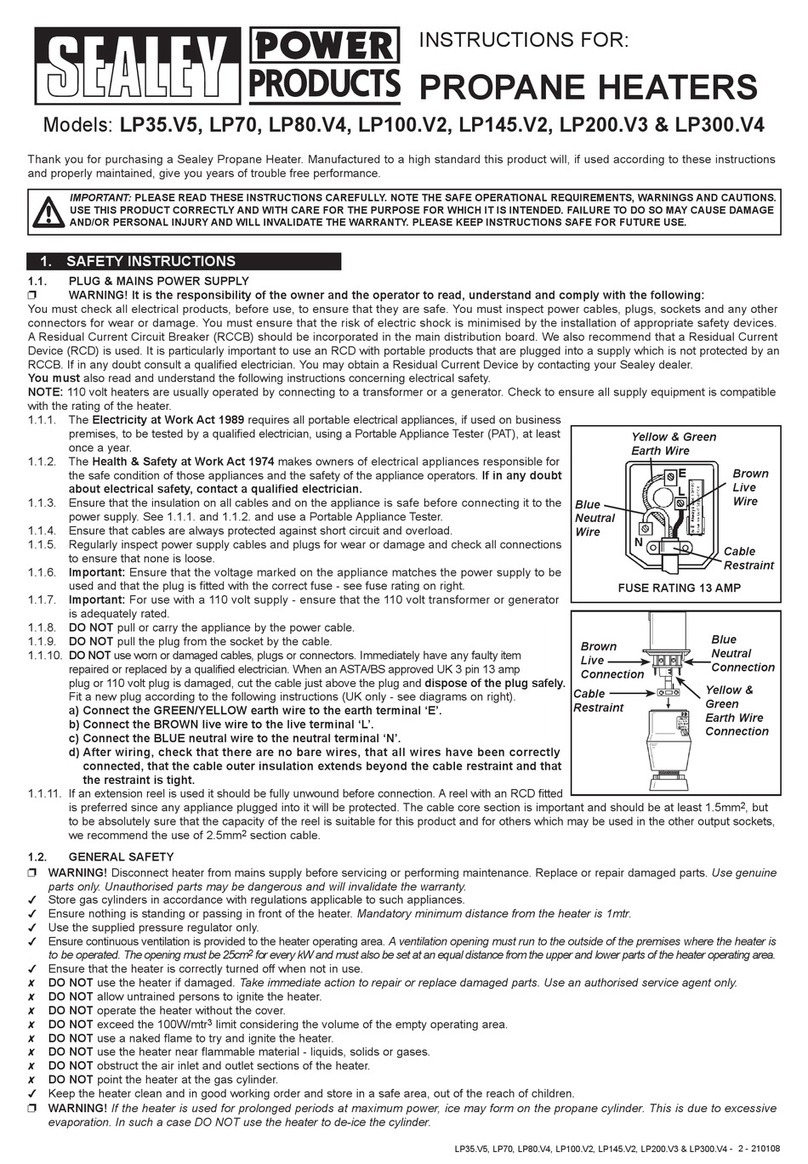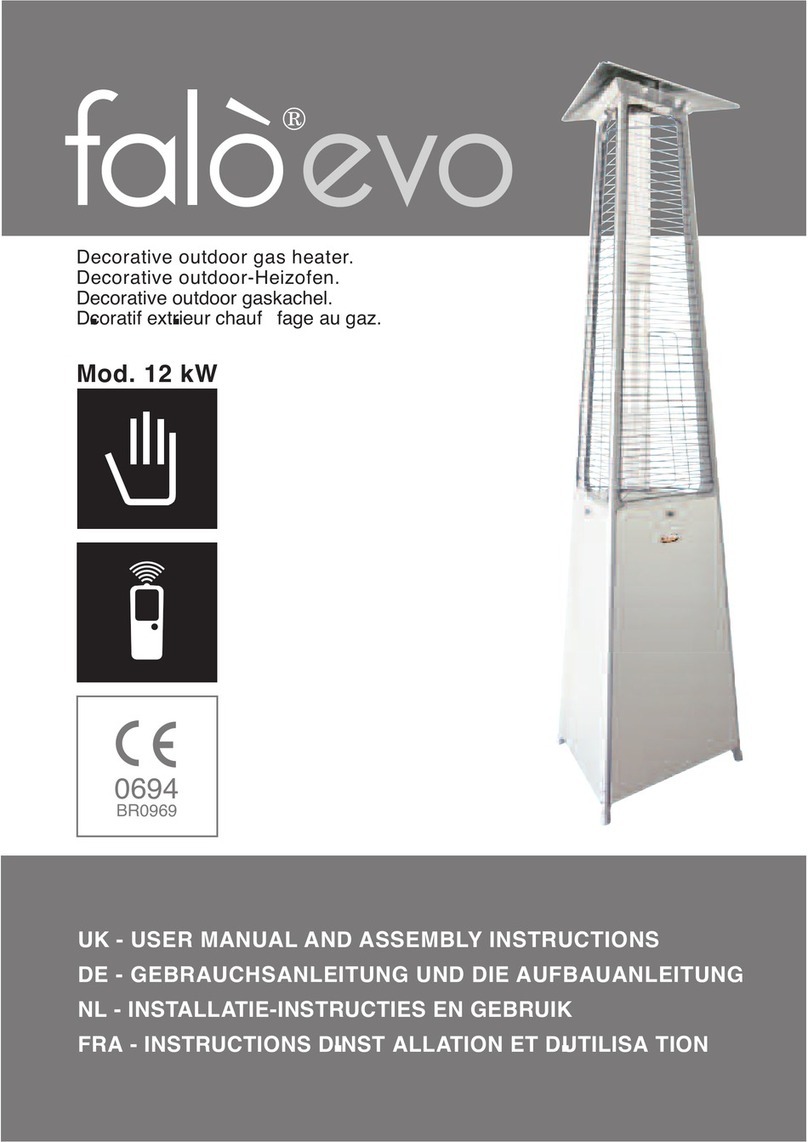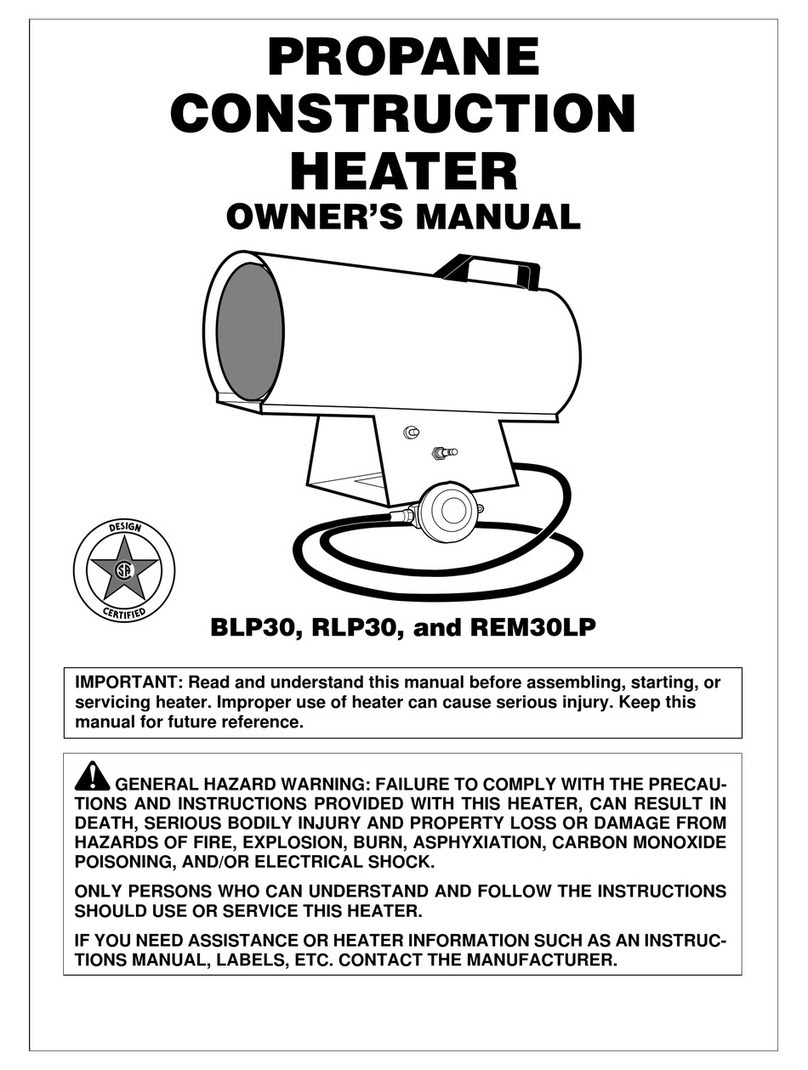page 7
WARNING! It is important to verify that the
installation is in compliance with current
regulations and that it is approved, wherever
necessary, by the competent inspection
authorities.
1.8 THE USE OF DUCTS WITH THE WD
VERSION
The technical, functional, and aesthetic
characteristics of the W and WR air heaters
have been researched to achieve their optimal
use inside the rooms where heating is required.
Theexperiencewehaveacquiredinthesetypes
of applications has resulted in further possible
solutions for the WD version, which was
specifically developed for installation on the
ceiling with ducts.
This version has a galvanized steel casing and
was designed to be connected to intake and
delivery ducts. Since the WD air heaters were
designedexclusivelyforinstallationontheceiling,
theycomecompletewitharemote-controlpanel.
This makes it possible to use a single unit to
serveseveral rooms or to install theairheater in
a separate room.
Typical examples of these situations could be:
- Efficiency apartments.
- Tourist accommodations, bungalows, etc.
- Doctors’ offices, offices.
- Bars, stores, etc., with the system installed in
a service room.
Using ducts to distribute the air provides a
solution that satisfies most current installation
requirements,with the distribution of the treated
air at a low noise level. However, it is advisable
to contact a qualified heating technician to
evaluate specific installation problems.
1.9 TECHNICAL DATA TABLE Unit W-WR 8 WD 8 W-WR 10 WD 10
Ratedthermalcapacity kW 8,90 10,50
kcal/h 7.650 9.030
Ratedthermalpower kW 8,05 9,50
kcal/h 6.900 8.150
Gas flow rate G20 Methane m³/h 0,94 1,11
(15 °C - 1.013 mbar) G30Butane kg/h 0,70 0,83
G31Propane kg/h 0,69 0,81
Gas pressure G20 p 20 mbars mbar 14,5 12,0
at the burner G30 p 28-30mbars mbar 27,0 - 29,0 27,0 - 29,0
(15°C-1.013 mbars) G31 p 37 mbars mbar 36,0 36,0
Diameterof the G20 mm/100 240 280
gas injector G30 / G31 mm/100 150 170
Ventilation Minimumspeed m³/h 720 750 850 900
aircapacity Maximumspeed m³/h 850 860 1.040 1.040
Noise level Minimumspeed dBA 42 41,5 43 46,5
at 3 meters Maximumspeed dBA 43 44,6 45,5 49
Effectivepressure Maximumspeed Pa / 40 / 40
Gassupply diameter in. G 1/2 A
Flue gas discharge / air supply diam. mm 60
Electricpower supply 230 V ~ / 1 / 50 Hz
Fuse (rapid type) A 2
Power absorbed W 170 180 180 190
Net weight kg 56 54 58 56
page 30
b) Theignition electrodeis nolonger connected
to the equipment connector.
- Restore the connection or replace the
electrodes. Do not make any connections so
astoavoidreducing thecable insulationlevel.
c) Theignition electrode(s) is (are)notcorrectly
positioned or the ceramic insulation is
damaged, with a subsequent leakage of the
ignition discharge.
- Replace the ignition electrode(s).
7.2.4 At the end of the preventilation phase,
the ignition discharge takes place, but
the flame does not ignite and the
control equipment shuts down within
the safety time
a) There is no gas supply or there is air inside
the piping.
- Determine the reason why there is no gas
supply by first checking the on-off valves on
the delivery line. Completely bleed off any
residual air and restart the unit.
b) Thegassolenoidvalvesdonotopenbecause
the coils are malfunctioning or their electrical
connection has been interrupted.
- Check that the connection cable and the
correspondingterminalsareingoodcondition.
Use a special tool to verify if the coils have
failed and replace them, if necessary (see
point 8.3).
c) The safety thermostat is malfunctioning and
does not allow the solenoid valves to open.
- Replace the safety thermostat (see point
8.6).
7.2.5 At the end of the preventilation phase,
the ignition electrode sparks and the
flame ignites correctly, but the control
equipmentshuts down withinthe safety
time
a) The phase-neutral electric power supply is
not correctly connected to the respective
terminals, marked as “L” and “N”, and
reversing the polarity may deactivate the
flame detection device.
- Check using a multimeter or phase detector
and correctly connect the cables to the
corresponding terminals.
b) The flame detection electrode is not correctly
positionedand isnot incontactwith theflame.
- Check if the electrode is properly connected
and if there are any deformations. Comply
with what is indicated in figure 30.
c) The flame detection electrode electric
connection has been interrupted.
- Check the electrode connection to the control
equipment.Ifthecableorceramicinsulationis
damaged,replacetheelectrodeinaccordance
with the positions shown in figure 30.
7.2.6 Thecontrol equipmentlocks outduring
normal operation
a) Thegassupplywascutoffandtheequipment,
afterrepeating the ignition cycle, and without
detecting the flame within the safety time
period, entered the lock out mode.
- Determine why the gas supply to the air
heaterwasinterrupted.Restarttheappliance
using the Reset button on the control panel.
b) Theincorrectpositioningoftheexternalintake
andexhaustterminalshascausedcombustion
productstoreturnandthispreventsthe flame
fromignitingproperlyandfrombeingdetected
by the electrode.
- Changethepositionsoftheoutsideterminals,
keeping in mind that the exhaust terminal
muststick out fartherthan the intake terminal
(see fig. 19 and fig. 20). Check that the
terminals are not installed inside niches or
recesses in the walls and that there are no
obstructions that prevent the air from
circulating freely.
c) The safety thermostat cuts off the supply to
the gas solenoid valve because overheating
has occurred due to incorrect operation or a
failure of the convection fan(s).
- Check for obstructions or dust deposits on the
filter and/or on the fan. Replace the
malfunctioningfan,ifnecessary(seepoint8.9).
d) The safety thermostat cuts off the supply to
the gas solenoid valve because overheating
hasoccurredduetoincorrectoperationofthe
fan control thermostat.
- Replacethefan controlthermostat(seepoint
8.5).
7.2.7 The burner stops while it is operating,
eventhoughthe roomtemperaturedoes
not require it
a) The control panel’s room thermostat is
defective or the panel (in the versions to be
installed on the ceiling) is not correctly
positionedin the room to detect the tempera-
tureproperly.
- If you believe that the panel’s position is
correct, but there is still a defect, it will be
